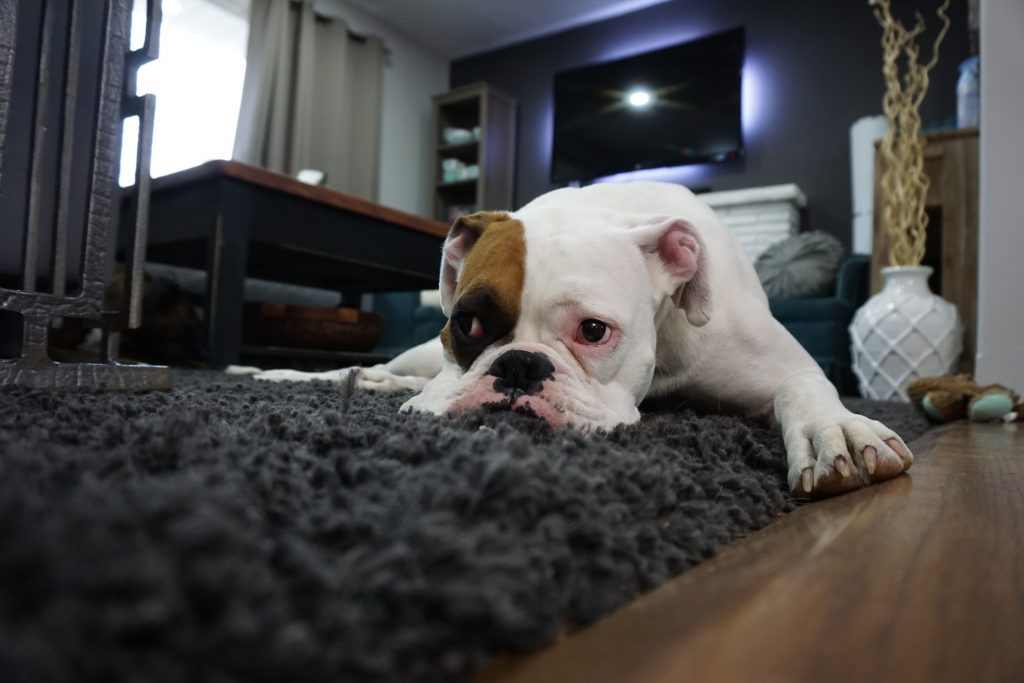In less than a month, we’ve witnessed the devastating impact of Typhoons Rolly and Ulysses on lives, jobs, homes — and even our pet animals.
We’ve witnessed heartbreaking posts of animals on social media as they struggled to survive. Animal rescuers and netizens have organized various initiatives to ensure their safety.
Calamities indeed occur at uncertain times, but it’s the responsibility of pet owners to make sure that pets are safe and sound. After all, animals are more than companions or guards. They are also part of the family.
Here are tips on how to take care of your pets during typhoons and other calamities.
Bring your pets inside

Your furry friends may have a house or cage outside, but when typhoons come, it’s best to bring them inside the house.
Like humans, animals feel safer when they’re inside a safe and comfortable location. Flying objects, lightning, and the sound of thunder may cause anxiety and trauma to them.
Once they’re inside the house, make sure to provide them with enough food and water.
Create a comfortable space

According to digital animal platform Pet Sitters Ireland, having a cozy space for your pets can help them relax.
Choose a quiet space in your house to help your pet feel at ease. If they feel safer when you’re around, bring them to the bedroom. Allow them to sleep beside you.
For dog owners of bulldogs, St. Bernards, golden retrievers, and other medium- and large-sized breeds, have a bed for them to sleep on.
You can also cover your windows with curtains or blinds to prevent them from panicking or getting startled.
Prepare a survival kit
Prepare an emergency kit for your family as well as your pets.
A pet emergency kit must include the following essentials: medication and medical records (including proof of vaccinations), a sturdy leash, food, water, toys, first aid kit, plastic bags for poop, contact details of your pet’s veterinarian, pet ID, and a recent photo of you and your pet just in case you get separated.
Have a pet ID
People for the Ethical Treatment of Animals (PETA) Asia director of animal assistance Ashley Fruno stressed in an interview with CNN Philippines that pets should have their identification details in case they get lost.
You can write your contact details on the pet’s collar or you give them a tag. Include your name, address, and phone number so they can easily be identified.
When you need to evacuate with your pet, make sure that the crate also has your pet’s identification details as well.
Plan disaster response in advance
For owners living in flood-prone areas, it’s important to plan evacuation measures ahead. Research and coordinate with local government officials on evacuation areas that are safe for your pets.
If it’s a life and death matter, make sure that your pets will be left on high ground with food and water. You can also leave them in areas with access to easier escape routes.
Don’t leave your pets chained or caged.
Be sensitive to your pet’s behavior

Typhoons and other disasters are indeed scary. However, make sure to keep yourself calm especially if you’ve come from an evacuation center.
Changes in environment and uncertain events are stressful and anxiety-inducing for animals. As a result, your pet’s behavior will change, making them aggressive or defensive.
You can comfort your pets by giving lots of hugs and loving words. Every animal has his or her own needs, so it’s important for owners to pay attention as much as they can.
You can contact the Philippines Animal Welfare Society (PAWS) for concerns regarding your pets’ safety through its official Facebook page or send an email to philpaws@paws.org.ph.
